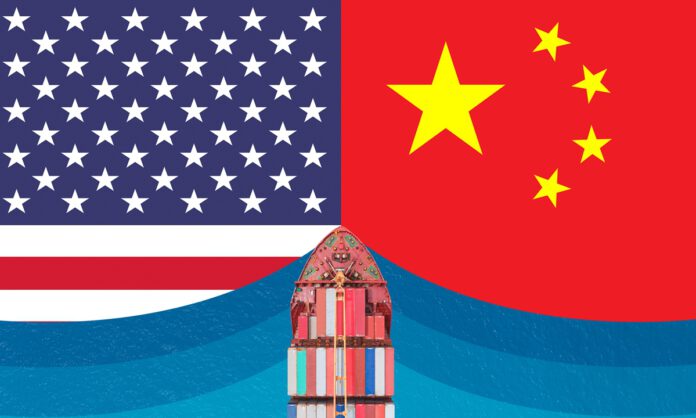
On April 17, the U.S. Trade Representative (USTR) announced the results of a Section 301 Action on China’s targeting of the maritime, logistics, and shipbuilding sectors for dominance. The announcement laid out charges to be imposed on Chinese shipping companies and China-built ships, structured in two phases.
Phase One, effective after 180 days, will charge Chinese-owned vessels and non-Chinese companies using China-built ships based on net tonnage, billed up to five times a year at U.S. ports. Charges will also apply to all foreign-built car carriers.
Phase Two, effective in three years, will impose charges on non-U.S. LNG carriers, further reinforcing U.S. shipbuilding protection. Compared to earlier drafts, the final version narrows the scope, introduces a grace period, and strengthens the focus on Chinese-built vessels while removing indirect penalties.
The shipping industry strongly opposed the move. Atlantic Container Lines (ACL), for example, warned it might exit the U.S. market since its fleet was built in China. While ACL’s case is notable, China’s overall share in the global existing fleet is still moderate—23%—although rapidly rising, especially in container ships and dry bulk carriers. Chinese shipyards currently dominate global new orders, with a 66% market share, including 71.7% of green-powered ship orders.
Container ships will be the most affected, given their reliance on fixed schedules and multiple U.S. port calls. Costs on U.S. West Coast routes could rise $450–$550 per TEU, and $200–$300 on the East Coast, potentially doubling or tripling under repeated charges. Although shipping companies are expected to pass on these costs to customers—as seen during the pandemic—current excess capacity suggests they could partially adjust routes rather than withdraw entirely.
Historical parallels can be drawn with Russia’s post-2022 shipping market, where external shocks triggered market exits and reorganization. Despite European and American carriers withdrawing, life in Russian cities like Moscow and St. Petersburg largely continued unaffected, similar to China’s situation during its 1979-1989 border conflict with Vietnam.
However, key differences exist between the U.S. and Russian shipping markets. The U.S. handles nearly 50 million TEU annually, about ten times Russia’s volume. U.S. ports can sustain direct calls by large vessels, while Russian ports require transshipment through hubs. After 2022, Russia’s market shifted toward small regional operators using older ships, leading to higher freight costs due to inefficiencies and sanctions compliance measures.
Applying the Russian experience to the U.S., the Section 301 charges will likely not cause mass withdrawals of global shipping giants, but will squeeze out smaller companies unable to absorb the new costs. Larger carriers might still pass on surcharges ($800 per two TEUs), but smaller ones could need to charge $2,000–$2,500, making competition unviable.
Strategically, U.S.-bound routes may split into segments to avoid direct penalties. New transshipment hubs could emerge in Montreal, Toronto, Panama’s Colón Free Trade Zone, or even COSCO’s Qiankai port. Ironically, U.S. ports like Los Angeles and New York could see their roles downgraded from mainline hubs to feeders, increasing costs and complexity in U.S. supply chains—an unintended consequence similar to how sanctions against Russia elevated St. Petersburg’s port status.
In this new structure, large global shipping firms will likely dominate cargo flow, while smaller carriers will absorb legal risk and logistical burdens.
Market patterns shaped by free competition typically require major external shocks to shift. For instance, after European and American sanctions forced major shipping companies out of Russia, Russian and Chinese firms quickly filled the gap, strengthening China’s broader presence. This trend is even more pronounced downstream in integrated logistics: at the 28th TransRussia: Logistics & Transport Exhibition Trade Show, among 583 exhibitors, 398 were Russian and over 100 of the 185 foreign exhibitors were Chinese, reflecting China’s growing dominance.
In the U.S. market, traditionally controlled by European and American companies, the 301 Act could trigger structural shifts, offering strategic opportunities for China. Companies should leverage market restructuring to expand their share, while the country must systematically address deep-rooted industry challenges.
The 301 Act also highlights fundamental flaws in the international shipping governance system, including the roles of global organizations and treaties. Earlier sanctions on Russia had already removed 12% of the world’s tanker fleet from regulatory oversight, underscoring the weakness of current frameworks.
In shipbuilding, the U.S. accounts for 22.5% of global maritime transport. Restrictions on Chinese-built ships would likely depress their prices and favor non-Chinese alternatives. However, as international shipbuilding is largely monopolized by China, Japan, and South Korea—and given that non-Asian fleets are mostly aging inventory—the true competition remains among these three. Japan’s and South Korea’s shipbuilding sectors depend heavily on European and American technology, components, and financing, suggesting that weakening them could realign competitive advantages in China’s favor.
China must respond across all fronts—shipping, shipbuilding, finance, law, and insurance. The strategic focus should not be on tit-for-tat retaliation, but on reforming international rules to correct discriminatory practices, fostering fair competition, and optimizing the current failing system to maintain healthy industry development. While the U.S. relies on its market leverage, it overlooks that more ships call at Chinese ports and that China holds a larger share, with clear technological and environmental advantages.
Against this backdrop, China should establish a comprehensive standards system covering environmental protection, technology, finance, law, and insurance. Standards could include RMB settlement for shipbuilding contracts, financing through Chinese banks, auditing by Chinese accounting firms, compliance with China Classification Society (CCS) environmental standards, procurement of spare parts from Chinese suppliers, CCS inspection and certification, insurance by Chinese insurers, consulting from Chinese data companies, and arbitration or litigation within Chinese maritime institutions.
These requirements should apply uniformly to all ships entering Chinese ports, including those operated by Chinese firms like COSCO. Compliance could be encouraged through pricing mechanisms: for example, imposing a 1.5% handling fee on contracts not settled in RMB or charging daily environmental treatment fees for ships that fail to meet China’s standards. This approach, based on sovereign rule-making, would mirror the European Union’s practice of levying carbon taxes on vessels entering its waters.
Source: Guancha, Global Times, Diaz Trade Law, American Entreprise Institute



